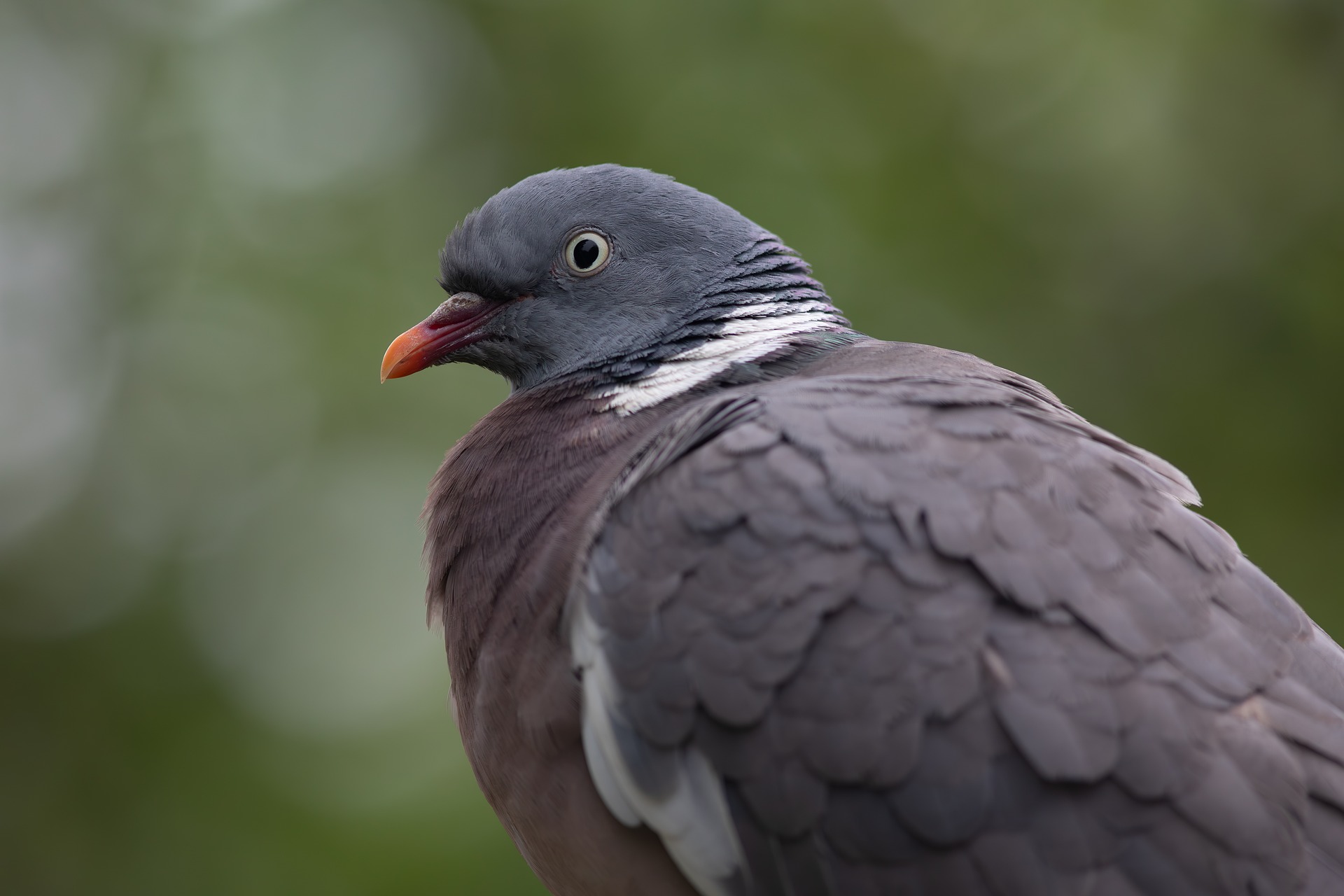The Common Wood Pigeon, scientifically known as Columba palumbus, is a widespread and familiar bird found across much of Europe, North Africa, and western Asia. Here are some key features and characteristics of the Common Wood Pigeon:
Appearance
- Size: The Common Wood Pigeon is a large bird, measuring about 38 to 44 centimeters (15 to 17 inches) in length, with a wingspan of 68 to 77 centimeters (27 to 30 inches).
- Color: It has a mostly gray body with a pinkish breast and a white neck patch. The head and neck are bluish-gray, and the wings feature a distinctive white bar across the middle, visible in flight.
- Bill and Feet: The bill is yellow with a reddish base, and the legs and feet are pinkish-red.
Habitat
- Wood Pigeons inhabit a variety of environments, including woodlands, farmlands, parks, and gardens. They are particularly fond of areas with a mix of open fields and tree cover, which provide feeding and nesting sites.
Distribution
- The Common Wood Pigeon is found across Europe, extending into North Africa and parts of western Asia. They are resident birds in most of their range, though some populations in northern and eastern areas may migrate south in winter.
Behavior
- Feeding: Wood Pigeons are primarily granivorous, feeding on seeds, grains, and berries. They also consume green foliage, buds, and invertebrates. They often forage on the ground in open fields and gardens.
- Flight: They have a powerful and direct flight, with characteristic wing claps on takeoff. In flight, the white wing bars and white neck patches are conspicuous.
- Social Structure: These birds are social and often seen in pairs or flocks. During the non-breeding season, they can form large flocks, sometimes numbering in the hundreds.
Breeding
- Nesting: The breeding season typically runs from April to September, but they can breed almost year-round in mild climates. Wood Pigeons build simple nests made of twigs, usually placed in trees or large shrubs.
- Eggs: The female lays two white eggs, which both parents incubate for about 16 to 17 days.
- Chick Rearing: The chicks are fed “pigeon milk,” a regurgitated, nutrient-rich substance produced by both parents. The young fledge about 30 to 34 days after hatching.
Vocalizations
- The Common Wood Pigeon’s call is a distinctive, repetitive cooing sound, often rendered as “coo-COO-coo-coo-coo.” This call is frequently heard in woodlands and gardens, especially during the breeding season.
Conservation Status
- The Common Wood Pigeon is classified as Least Concern by the IUCN, due to its large population and wide distribution. It has adapted well to human-altered landscapes, thriving in urban and suburban areas as well as rural environments.
Interesting Facts
- Wood Pigeons are known for their large, conspicuous flocks that can cause significant crop damage in agricultural areas, leading to them being considered pests in some regions.
- They have a unique ability to drink by sucking up water without having to tilt their heads back, unlike most other bird species.
- The white neck patches on adult Wood Pigeons are absent in juveniles, which have a more uniform gray plumage.
In summary, the Common Wood Pigeon (Columba palumbus) is a large and adaptable bird with a wide range and varied habitat preferences. Its distinctive appearance, characteristic flight, and familiar cooing make it a well-known species throughout its range.
Views: 4
Subscribe to the newsletter:
